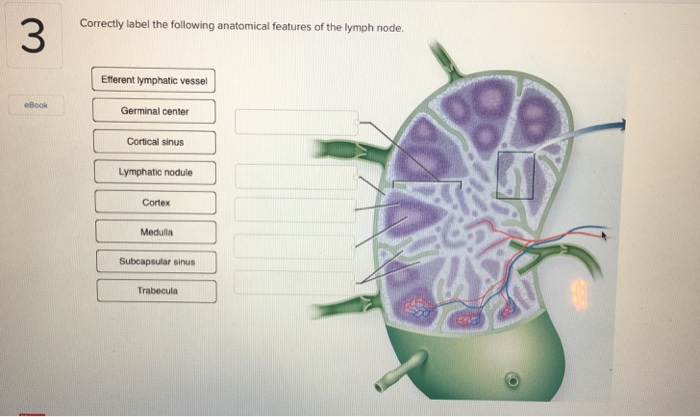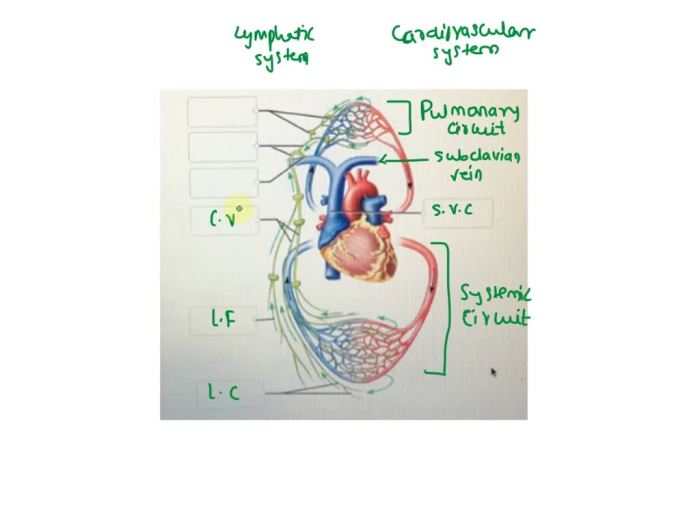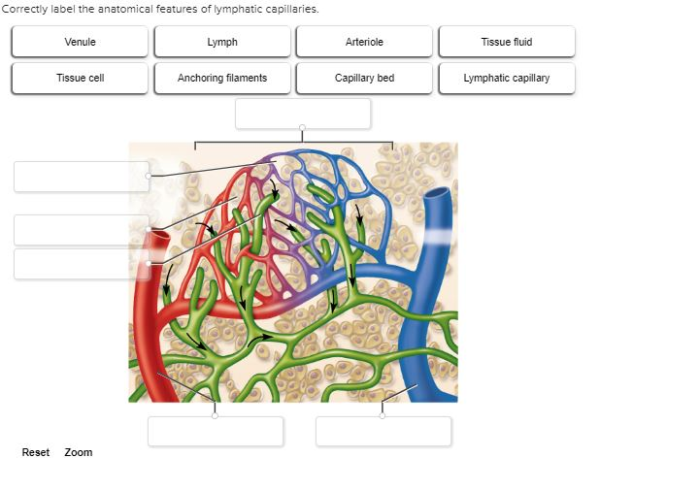Correctly label the anatomical features of lymphatic capillaries – Correctly labeling the anatomical features of lymphatic capillaries is essential for understanding the lymphatic system and its functions. Lymphatic capillaries are the smallest vessels in the lymphatic system, and they play a crucial role in fluid balance, immune function, and waste removal.
This article provides an overview of the anatomical features of lymphatic capillaries, the methods used to label them, and the applications of this information in research and clinical practice.
Lymphatic capillaries are lined by a single layer of endothelial cells that are connected by tight junctions. They have a thin basement membrane and are surrounded by a network of pericytes. Lymphatic capillaries are located in close proximity to blood capillaries, but they are not directly connected to them.
Instead, they collect fluid and waste products from the interstitial spaces and transport them to larger lymphatic vessels.
1. Introduction

Correctly labeling the anatomical features of lymphatic capillaries is essential for understanding the structure and function of the lymphatic system. The lymphatic system is a network of vessels and nodes that plays a crucial role in maintaining fluid balance, transporting waste products, and supporting the immune system.
Lymphatic capillaries are the smallest vessels in the lymphatic system and are responsible for collecting fluid and waste products from tissues. They are similar to blood capillaries but have some unique features that distinguish them.
2. Anatomical Features of Lymphatic Capillaries

Lymphatic capillaries are thin-walled vessels that are lined with a single layer of endothelial cells. They have a diameter of 10-20 μm and are highly permeable to fluid and small molecules.
Lymphatic capillaries are found in all tissues of the body, except for the central nervous system. They are particularly abundant in areas where there is a high rate of fluid exchange, such as the skin, lungs, and intestines.
3. Methods for Labeling Lymphatic Capillaries: Correctly Label The Anatomical Features Of Lymphatic Capillaries

There are a number of different methods that can be used to label lymphatic capillaries. These methods include:
- Intravital microscopy:This method involves injecting a fluorescent dye into the bloodstream and then imaging the lymphatic capillaries in real time.
- Immunohistochemistry:This method involves using antibodies to stain specific proteins that are expressed on the surface of lymphatic capillaries.
- Electron microscopy:This method involves using an electron microscope to visualize the ultrastructure of lymphatic capillaries.
4. Applications of Correctly Labeling Lymphatic Capillaries

Correctly labeling lymphatic capillaries has a number of applications in research and clinical practice. These applications include:
- Diagnosis of lymphatic disorders:Labeling lymphatic capillaries can help to diagnose lymphatic disorders, such as lymphedema and lymphatic malformations.
- Treatment of lymphatic disorders:Labeling lymphatic capillaries can help to develop new treatments for lymphatic disorders.
- Understanding the lymphatic system:Labeling lymphatic capillaries can help to improve our understanding of the structure and function of the lymphatic system.
5. Challenges in Correctly Labeling Lymphatic Capillaries
There are a number of challenges associated with correctly labeling lymphatic capillaries. These challenges include:
- The small size of lymphatic capillaries:Lymphatic capillaries are very small, which makes them difficult to visualize.
- The fragility of lymphatic capillaries:Lymphatic capillaries are fragile and can be easily damaged during labeling procedures.
- The lack of specific markers for lymphatic capillaries:There are no specific markers that are expressed exclusively on lymphatic capillaries, which makes it difficult to distinguish them from other types of blood vessels.
Top FAQs
What are lymphatic capillaries?
Lymphatic capillaries are the smallest vessels in the lymphatic system. They are lined by a single layer of endothelial cells that are connected by tight junctions. They have a thin basement membrane and are surrounded by a network of pericytes.
What is the function of lymphatic capillaries?
Lymphatic capillaries collect fluid and waste products from the interstitial spaces and transport them to larger lymphatic vessels.
How are lymphatic capillaries labeled?
Lymphatic capillaries can be labeled using a variety of methods, including immunohistochemistry, electron microscopy, and confocal microscopy.